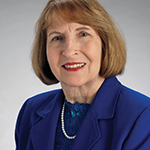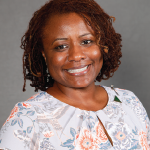TR: How did you start working in rheumatology?
Ms. Slusher: It was actually through a neighbor, who knew I was a PA. She had lupus and was very sick. I saw her from time to time, and at one point, she mentioned that she wished I would talk to her rheumatologist because he could really use some help at his office. I didn’t pursue it, but she brought it up a few times afterward, and I finally asked her for his card and said I would give him a call. I did.
I went into his office, even though I didn’t know much about rheumatology. I wanted to show him what a PA can do in an office and what types of patients we can see. One of the nurses I had worked with at the allergy clinic had actually worked for this rheumatologist, so she vouched for me and told him I would be a great addition. I ended up shadowing him for about four hours. It turned out that I really liked his patient population, so I became a PA in his office.
TR: Why have you stayed in rheumatology?
Ms. Slusher: It is a very good feeling as a provider to come in and be able to make a difference for a patient, and with the ushering in of biologics, we can help patients feel better in a very short period of time. I also enjoy the patient-education aspect in diseases ranging from gout to lupus to dermatomyositis and being able to really make patients into partners in their healthcare.
Now that I’ve been in rheumatology for several years, I find that this field is the perfect intersection of allergy, immunology and oncology. And since I get to provide education and use my social work skills quite a bit while seeing patients, I’d have to describe my eclectic background as ‘interprofessional.’ I’m very thankful for this path in my career.
TR: You have been an active volunteer in the ARP. Why did you get involved?
Ms. Slusher: I had just started my job as a PA in the rheumatologist’s office when I got a call from someone at the ARP. That person was Kim Kimpton, PT, who was the ARP president elect at the time. She said the ARP was developing a clinical focus course to teach nurse practitioners (NPs) and PAs how to do joint injections and physical exams, and she wanted me to help with the course development. I told her that she must have me confused with someone else, because I had just joined a rheumatology [practice] and really needed that course myself. She said the organization wanted my perspective as a new PA working in rheumatology. I have a volunteer spirit anyway, so she was able to talk me into it. That’s how I got started volunteering for the ARP.



